
New plates for the ½d, 3d, 6d and 1/- values were produced by Perkins, Bacon & Co in 1907. The new 3d, 6d and 1/- values were in the reduced size previously used for the ½d, 1d, 2d and 4d values.
In my opinion, stamps in the reduced format, especially the 6d, are less attractive and lack the charm of the earlier large format stamps.
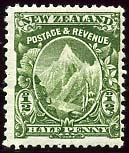
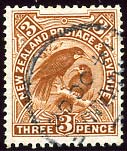
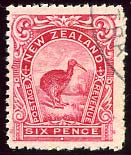
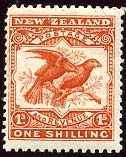
The stamps were recess printed on Cowan paper watermarked NZ and star.
Perforations
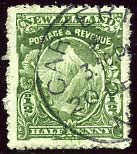

Rough line and clean cut comb perforations
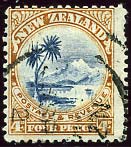
4d, comb perf 14 x 13
The first printings in 1907 of the ½d, 3d and 6d values were perforated 14 by a line machine in the same way as the previous larger format stamps. This machine produced fairly rough perforations. It was replaced (in late 1907 for the ½d and 1908 for the 3d, 6d and 1/-) by two comb machines (perf 14 x 13 and perf 14 x 15) which gave very clean cut holes.
Of the other first pictorials, only the 4d value was perforated by
a comb machine.
It appeared perf 14 x 13 in February 1908.
The 4d plates were quite worn by this time.
Officials
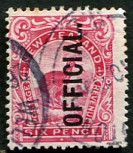
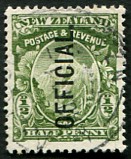
Only the ½d and 6d values of the Perkins Bacon plates were overprinted Official. In December 1908, the ½d perf 14x15 was overprinted while the 6d perf 14x13 was overprinted in February 1908 and the perf 14x15 in March 1909.
A new set of stereos was produced for these issues.
Postscript
King Edward VII succeeded Queen Victoria in 1901, but it was not
until November 1909 that a
new definitive set was issued carrying
his head and replacing (most of) the first pictorials.
There was no 2½d value in the new set and so it remained
on sale until 1915 when it was replaced by
the George V value.
The 2/- and 5/- values remained in use until 1912 and 1913
respectively.
The above information is taken from:
The Postage Stamps of New Zealand Vol 1, published by the
Royal Philatelic Society of New Zealand in 1938.
The 1898 Pictorial Issue of New Zealand, D. Diamond, published by the
New Zealand Society of Great Britain in 2014.
All scans were made by the author.